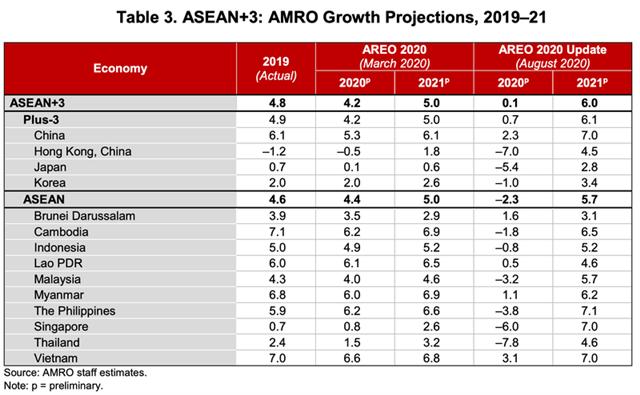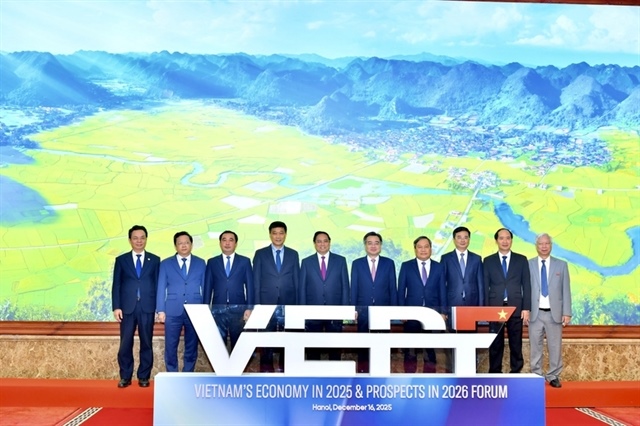Vietnam GDP growth predicted to expand 3.1% in 2020: AMRO
Vietnam GDP growth predicted to expand 3.1% in 2020: AMRO
AMRO remains optimistic about the Vietnam's outlook, thanks to the country's effective anti-virus measures and favorable structural economy.
Vietnam’s GDP growth for this year is predicted at 3.1% in 2020 and bounce back to 7% in next year, according to the ASEAN+3 Macroeconomic Research Office (AMRO), a regional macroeconomic surveillance organization in the ASEAN+3 region (plus China, Japan and South Korea).

|
These figures are significantly lower than AMRO’s previous prediction in March at corresponding 6.6% and 6.8%, but remained highest in the region.
Hoe Ee Khor, AMRO’s chief economist, said at the online launch of the report on August 6 that while the GDP growth forecast for Vietnam did not take into account the recent Covid-19 resurgence in Danang, the office remains positive about Vietnam’s outlook, given its efficient measures against the pandemic and the 100-day period without any new Covid-19 cases.

Hoe Ee Khor, AMRO’s chief economist.
|
Vietnam’s structural economy is different to countries like Thailand, set to suffer a contraction of 7.8% this year, for which the latter’s two main driving forces of tourism and auto industry have been badly hit by the pandemic.
According to Khor, some major industries in Vietnam, including electronics production and textile are less affected by the pandemic. Additionally, the country continues to receive large amount of foreign direct investment and is among major beneficiaries of a shift in investment capital from China.
However, it remains to be seen how the outbreak in Danang turns out, he added.
The World Bank in late July predicted Vietnam’s economic growth at 2.8% this year, the fifth fastest-growing economy globally.
Meanwhile, the Covid-19 pandemic continues to cause severe economic impacts among countries in the region. The average GDP growth rates of ASEAN+3 in this year and next have been revised down to 0.1% and 6% compared to 4.2% and 5% reported in March.
The recovery is anticipated to follow a gradual U-shape, led by China, which is projected to grow by 2.3% this year compared to 6.1% in 2019, while nine of the 14 ASEAN+3 member economies are expected to contract in 2020, including Japan and South Korea, stated the report.
Countries that are expected to maintain positive economic growth this year are China, Brunei, Laos, Myanmar and Vietnam.
However, this trajectory assumes that any unwinding of policy measures proceeds smoothly, and is predicated on the effective containment of the Covid-19 pandemic, both regionally and globally, it added.
AMRO’s report stated the biggest challenge facing ASEAN+3 policymakers will be balancing the tradeoff between easing restrictions to revive the economy and risking a second or even third wave of infections.
For the region to open up fully, the virus must be fully contained in all countries. Otherwise, it will spread from the infected countries to others, and there will be another round of lockdowns, which the region can surely ill-afford, the report asserted.


























